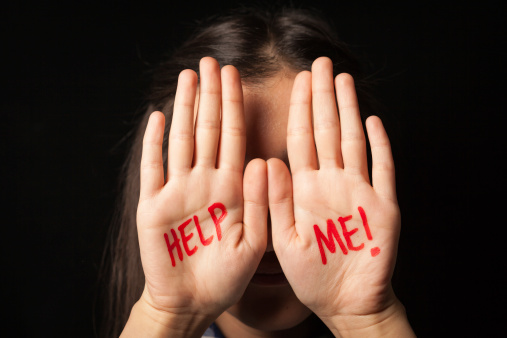
Wtitten by Stephen Gray Wallace and Christopher Bell.
“Summertime and the livin' is easy,” or so said the late First Lady of Song, Ella Fitzgerald.
But suppose it’s not?
It’s true that for many young people the break from school is a welcomed respite from self-reported stress induced by classes, homework and extracurricular activities. Yet a significant number of adolescents who participated in a study conducted by the American Psychological Association (APA) reported also feeling stressed during the summer – and at levels higher than what even they believed to be healthy.
While such stress can bring unwelcome side effects (think disrupted sleep, upset stomachs and skipped meals), other more serious psychological disorders may emerge – or continue – during summer break. Alas, they too don’t magically disappear on the first day of freedom.
Unfortunately, there’s no shortage of emotional distress to go around.
When it comes to youth, it is estimated that “approximately one in five has a diagnosable mental disorder,” according to the Office of Adolescent Health (OAH) at the U.S. Department of Health and Human Services (HHS). These include pervasive rates of anxiety and depression. Alarmingly, the same federal agency says that less than half of those suffering received treatment during the past year. In addition, a new report from the Substance Abuse and Mental Health Services Administration (SAMHSA) states, “One in nine U.S. adolescents aged 12-17 report having experienced a major depressive episode in the past year.”
These figures can be attributed, in part, to the unwillingness of kids to reach out to someone else when they are struggling.
Indeed, the striking number of adolescents who do not receive help despite having a serious mental health problem points to a malfunction in our system of providing them care. However, one interpretation of this statistic – and likely at least one of the influential causes of adolescents going without treatment – is the inability of many of them to ask for help.
Too often, youth (and adults) are reluctant to ask for assistance either from someone close or even from a professional mental health practitioner. In fact, in 2010 a report in the U.S. National Library of Medicine (NLM) at the National Institutes of Health stated that “only 18 to 34 percent of young people with high levels of depression or anxiety symptoms seek professional help.”
Which, of course, also means some 82 to 66 percent do not.
That report also noted reviews of studies that concluded “a high reliance on self to solve problems, a lack of emotional competence, and negative attitudes about seeking professional help were barriers to help-seeking.”
Conversely, the same reviews identified numerous “facilitators” in asking for help, including “emotional competence, knowledge, positive attitudes towards seeking professional help, social encouragement, and the availability of established and trusted relationships with professionals.”
Breaking down the stigmas that cloud young people's perceptions of mental health problems and ensuring that they feel comfortable obtaining help is an incredibly integral part of treating mental illness.
Maybe the most important part.
While it notes that most teenagers successfully manage the conversion from childhood to adulthood, another entry in the NLM warns, “Adolescence is also a time of increasing incidence of several classes of psychiatric illnesses, including anxiety and mood disorders, psychosis, eating disorders, personality disorders and substance abuse.” The cause? “Aberrations of maturational changes that normally occur in the adolescent brain.”
The good news is that early detection and treatment can make a major difference in the life of a young person. Which brings us back to summer.
Is it possible that youth may experience more risk out of school when, arguably, fewer “caring adults” have eyes on them? After all, the teachers, coaches and counselors who supplement parental involvement, support and intervention may simply not be around.
Thus, it may be the case that already-strong adolescent peer relationships take on more importance during freer, unstructured and unsupervised time. HHS, for example, highlights the critical role that young people can play in looking for warning signs of trouble and encouraging friends to get help. It offers, “… common symptoms include persistent irritability, anger, or social withdrawal, as well as major changes in appetite or sleep.”
While it makes intuitive sense to empower those close to someone experiencing difficulties, it also raises some questions as to when, and how, peers should assume responsibility for the welfare of a friend. And this may be especially true when it comes to self-harm and suicide. For those seeking detailed guidelines on assessing and managing suicidal ideation, Pathway provides a resource grounded in the latest clinical research and practices.
This is not an insignificant point when you consider that, despite conventional wisdom, suicide rates are higher in the spring and early summer than during the darker days of winter and new data from the Centers for Disease Control and Prevention peg suicides in the United States at a nearly 30-year high. Significantly, suicide rates among young people remain stubbornly stuck at number three on the list of leading causes of death.
It is commonly recognized that, during adolescence, friends become an increasingly important source of social and emotional support. To wit, establishing more meaningful, adult-like attachments to peers is one of the three primary developmental tasks of this age group.
Yet as powerful as peers may be, it’s time to ask for adult help when health and safety are at risk. After all, as important as these young people may be in terms of providing support for their friends, they are not typically trained to shoulder significant responsibility for the welfare of a peer.
Whether in a transitory crisis or something more serious, all young people benefit from some level of self-support. What can they do? Author Amy Morin shared nine ideas in a recent article for “Motto” from TIME.
• Focus on what they can control
• Reflect on what they’ve learned
• Take decisive action
• Practice gratitude
• Look for new opportunities
• Evaluate their priorities
• Recognize their inner strength
• Take care of themselves
• Remain psychologically flexible
A list of advice is good. A meaningful conversation with friends is better. Especially given that they’re only one call away.



























